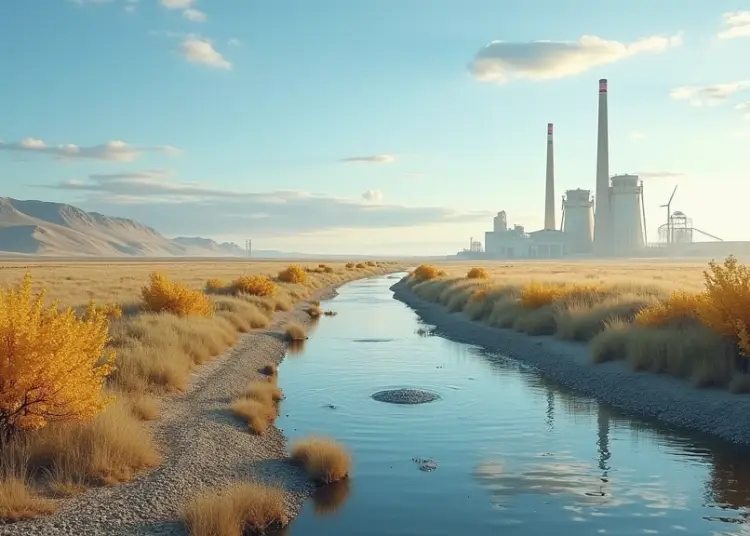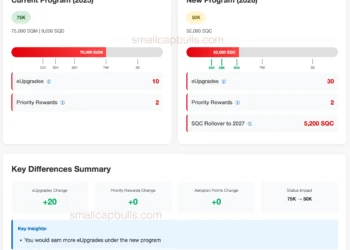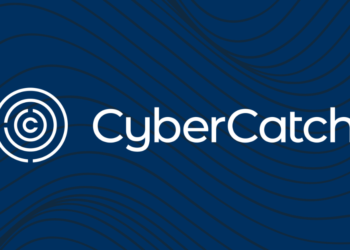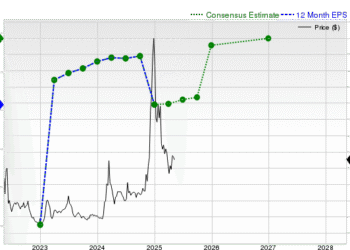Critical minerals are essential components in the transition to a sustainable economy, playing a vital role in the production of technologies that support clean energy projects. As global demand surges, countries like Canada are making significant strides in mineral exploration, particularly in provinces such as Saskatchewan and Alberta, which are rich in resources like lithium and rare earth elements. The Canadian government’s commitment to investing in these critical minerals is evident, with substantial funding directed towards advancing local exploration and production capabilities. In 2023, Saskatchewan reached a remarkable ten-year high in mineral exploration expenditures, highlighting the province’s potential as a leader in critical mineral development. With a focus on fostering economic growth and job creation, these initiatives position Canada, and particularly Saskatchewan and Alberta, at the forefront of the critical minerals race.
Essential elements for modern technology, often referred to as vital minerals, are becoming increasingly important in various industries, particularly in the context of renewable energy. In Canada, significant investments are being channeled into mineral exploration and development, especially in the provinces rich in resources like lithium and rare earth minerals. As the push for a clean economy intensifies, the provincial governments are recognizing the potential of these invaluable resources to drive innovation and job creation. With a comprehensive strategy to harness and develop these vital minerals, Saskatchewan and Alberta are emerging as key players in the global market, paving the way for advancements in clean energy technologies. The collaboration between government and industry is crucial in unlocking the vast potential of these essential elements.
The Significance of Critical Minerals in Canada’s Economy
Critical minerals play a pivotal role in the Canadian economy, particularly as the nation pivots towards a clean energy future. With the rise of electric vehicles (EVs) and renewable energy technologies, the demand for critical minerals such as lithium and rare earth elements is skyrocketing. Canada’s strategic investments in these resources serve not only to bolster economic growth but also to position the country as a key player in the global supply chain. As exploration expenditures in Saskatchewan reach new heights, the potential for job creation and technological advancement in the mineral sector becomes increasingly evident.
In Saskatchewan, the government’s commitment to mining and exploration is evident through significant funding initiatives aimed at developing critical minerals. The identification of 34 critical minerals, with 27 located within the province, highlights Saskatchewan’s abundance of these essential resources. This proactive approach not only enhances the province’s economic landscape but also supports global efforts to transition towards sustainable energy solutions. By fostering a robust mineral exploration environment, Saskatchewan is paving the way for innovation and growth in the clean energy sector.
Saskatchewan’s Advancements in Lithium Production
Saskatchewan is emerging as a hub for lithium production, driven by government investments and strategic planning. With lithium being a critical component in batteries for electric vehicles and energy storage systems, the province’s focus on this mineral is timely. The recent allocation of $31.8 million to the Saskatchewan Research Council for rare earth processing further signifies the commitment to enhancing lithium production capabilities. This investment not only aims to increase local supply but also positions Saskatchewan as a competitive player in the global lithium market.
The collaboration between government and Indigenous communities in Saskatchewan is also a noteworthy aspect of this lithium development. Engaging with local stakeholders ensures that the exploration and production processes are inclusive and beneficial to all parties involved. This approach not only fosters positive relationships but also enhances the social license to operate, which is crucial for mining projects. As the province continues to capitalize on its lithium resources, the potential for job creation and sustainable economic development remains substantial.
Federal Support for Clean Energy Projects in Saskatchewan
The Canadian government’s support for clean energy projects in Saskatchewan is a clear indication of its commitment to a sustainable future. With an investment of $81.3 million for the development of nuclear small modular reactors (SMR), the government is not only advancing technology but also creating a pathway for cleaner energy production. This initiative, led by SaskPower, represents a significant step towards reducing greenhouse gas emissions while ensuring energy security for the province.
In addition to nuclear energy, the $55 million investment in the Bekevar Wind Power project highlights the diversification of clean energy sources in Saskatchewan. Partnering with the Cowessess First Nation further emphasizes the importance of collaboration in achieving energy goals. As these projects come to fruition, Saskatchewan is expected to witness substantial growth in clean energy employment, projected to create approximately 131,000 new jobs by 2050. This transition to a low-carbon economy not only benefits the environment but also strengthens the province’s economic foundation.
Alberta’s Strategic Investments in Lithium Production
Alberta’s commitment to lithium production is reinforced by the recent support awarded to E3 Lithium, amounting to approximately $5.5 million. This funding aims to advance the company’s integrated lithium brine demonstration facility, which is crucial for developing a commercial-scale operation. By leveraging its abundant brine reserves and existing oil and gas infrastructure, Alberta is positioning itself as a leader in the critical minerals race, particularly in lithium production.
The Alberta government’s strategic investments not only enhance E3 Lithium’s capabilities but also stimulate local economies by creating jobs and attracting further investments. As the demand for battery-grade lithium continues to rise, Alberta’s efforts to commercialize this resource are timely and impactful. With a focus on innovation and sustainability, Alberta is set to become a key player in the global market for critical minerals, further solidifying its economic prospects.
Collaboration with Indigenous Communities for Mineral Development
The engagement of Indigenous communities in mineral exploration and development is crucial for the sustainable growth of Saskatchewan’s resource sector. The recent meetings between Canada’s Minister of Energy and Natural Resources and Indigenous leaders signify a commitment to inclusive dialogue and shared decision-making. By involving Indigenous stakeholders, the government ensures that mineral development projects are not only economically viable but also socially responsible, respecting the rights and interests of local populations.
This collaborative approach is essential for fostering trust and transparency in mineral development. Through partnerships with Indigenous communities, Saskatchewan can leverage traditional knowledge and practices that contribute to more sustainable and environmentally friendly mining operations. As the demand for critical minerals grows, such collaborations will play a vital role in ensuring that the benefits of mineral exploration are shared equitably among all stakeholders.
The Role of Rare Earth Elements in Clean Energy Technologies
Rare earth elements (REEs) are indispensable in the production of clean energy technologies, including wind turbines, solar panels, and electric vehicle batteries. Saskatchewan’s rich deposits of these minerals position the province as a key player in the global transition to renewable energy. The government’s investment in processing rare earth elements for the first time in Canada is a significant milestone that underscores the importance of these resources in achieving clean energy goals.
By prioritizing the exploration and processing of REEs, Saskatchewan is not only enhancing its economic prospects but also contributing to global sustainability efforts. The demand for these elements is expected to surge as countries strive to reduce carbon emissions and invest in green technologies. As Saskatchewan continues to invest in its mineral resources, the province is poised to become a critical supplier of rare earth elements, driving innovation and growth in the clean energy sector.
Investing in Research and Development for Mineral Exploration
Research and development (R&D) play a vital role in advancing mineral exploration techniques and improving resource extraction processes. In Saskatchewan, the allocation of funds for the Saskatchewan Research Council underscores the government’s commitment to innovation in the mineral sector. By investing in R&D, the province aims to enhance the efficiency and sustainability of mineral extraction, particularly for critical minerals like lithium and rare earth elements.
The focus on R&D not only benefits mineral producers but also fosters a culture of innovation that can lead to new technologies and practices within the industry. As global competition for critical minerals intensifies, Saskatchewan’s investment in research will be essential for maintaining its competitive edge. By positioning itself at the forefront of mineral exploration technology, Saskatchewan can ensure responsible resource management and maximize economic returns for the province.
Economic Opportunities from the Transition to Low-Carbon Economy
The transition to a low-carbon economy presents immense economic opportunities for Saskatchewan, particularly in the clean energy and mineral sectors. The government’s strategic investments in critical minerals are poised to drive job creation and stimulate local economies. As the demand for electric vehicles and renewable energy sources continues to rise, Saskatchewan is well-positioned to capitalize on its abundant resources, paving the way for a sustainable economic future.
According to forecasts from Clean Energy Canada, Saskatchewan could experience some of the highest growth rates in clean energy employment, with the potential for approximately 131,000 new jobs by 2050. This transition not only provides a pathway for economic resilience but also addresses the urgent need for sustainable practices. By embracing clean energy projects and supporting critical mineral development, Saskatchewan is taking significant steps towards a prosperous and environmentally friendly economy.
Global Competition in the Critical Minerals Market
As the global race for critical minerals intensifies, Canada, and particularly Saskatchewan and Alberta, are emerging as key players in the market. Countries worldwide are increasing their investments in mineral exploration and development to secure their supply chains for essential resources. Canada’s proactive stance in identifying and exploiting its critical mineral deposits places it in a favorable position to meet global demand, especially for lithium and rare earth elements.
This competitive landscape emphasizes the importance of innovation and strategic partnerships in the mineral sector. By investing in research, fostering collaborations with Indigenous communities, and supporting clean energy projects, Saskatchewan and Alberta are not only enhancing their own economic opportunities but also contributing to global efforts in sustainable development. The strategic positioning of these provinces in the critical minerals market will be essential for maintaining their competitiveness on the world stage.
Frequently Asked Questions
What are critical minerals and why are they important for clean energy projects in Canada?
Critical minerals are essential raw materials that are vital for the production of high-tech devices, renewable energy technologies, and national security. In Canada, particularly in Saskatchewan, investments in critical minerals like lithium and rare earth elements are crucial for advancing clean energy projects. These minerals are integral for manufacturing batteries, wind turbines, and other technologies that support a low-carbon economy.
How is Saskatchewan contributing to the exploration of critical minerals?
Saskatchewan has emerged as a key player in critical minerals exploration, with notable investments aimed at enhancing mineral extraction and processing. In 2023, Saskatchewan’s mineral exploration expenditures reached a 10-year high, focusing on 27 of the 34 identified critical minerals. This includes significant funding to process rare earth elements, positioning the province as a leader in critical minerals development.
What role does the Alberta government play in lithium production?
The Alberta government is actively supporting lithium production through financial investments, such as the $5.5 million funding allocated to E3 Lithium. This funding aids in developing an integrated lithium brine demonstration facility, which is essential for producing battery-grade lithium carbonate. Alberta’s rich brine reserves and skilled workforce are being leveraged to establish the province as a global leader in critical minerals innovation.
What is the significance of rare earth elements in critical minerals exploration?
Rare earth elements are a subset of critical minerals that are crucial for various high-tech applications, including clean energy projects and defense technologies. Their significance lies in their unique properties that are essential for producing magnets, batteries, and other advanced materials. In Saskatchewan, investments to process rare earth elements are being made to enhance local capabilities and reduce reliance on foreign sources.
How do investments in critical minerals impact job creation in Saskatchewan?
Investments in critical minerals are expected to stimulate significant job creation in Saskatchewan, with projections indicating approximately 131,000 new jobs by 2050 in the clean energy sector. The government’s commitment to advancing clean energy projects and supporting mineral exploration not only boosts employment opportunities but also fosters economic growth in the region.
What are the future prospects for critical minerals in Canada?
The future prospects for critical minerals in Canada are promising, especially with ongoing investments and strategic initiatives aimed at enhancing exploration and production. As global demand for critical minerals increases due to the transition to clean energy technologies, Canada, particularly Saskatchewan and Alberta, is poised to become a key supplier. This shift presents immense economic opportunities and positions Canada as a leader in the critical minerals sector.
What initiatives are being taken to ensure the sustainable extraction of critical minerals?
To ensure sustainable extraction of critical minerals, the Canadian government and provincial authorities are engaging with Indigenous leaders and stakeholders to promote responsible mining practices. Investments in clean technologies and the development of environmentally friendly extraction methods are also being prioritized, ensuring that mineral exploration contributes positively to both the economy and the environment.
| Key Points |
|---|
| The Canadian government is increasing investments in critical minerals, specifically lithium and rare earths, despite global reductions in spending on exploration. |
| Saskatchewan and Alberta are receiving significant financial support for their mineral exploration and development activities. |
| 34 critical minerals have been identified, with 27 found in Saskatchewan, which saw a 10-year high in mineral exploration expenditures in 2023. |
| The Minister of Energy and Natural Resources, Jonathan Wilkinson, is engaging with Indigenous leaders and stakeholders to further develop critical minerals in Saskatchewan. |
| The government allocated approximately $31.8 million (C$29 million) to the Saskatchewan Research Council for processing rare earth elements. |
| Funding of $81.3 million (C$74 million) is being provided for the development of nuclear small modular reactors (SMR) in Saskatchewan. |
| $55 million (C$50 million) is being invested in the Bekevar Wind Power project in partnership with the Cowessess First Nation. |
| Saskatchewan is projected to see high growth in clean energy employment, with around 131,000 new jobs expected by 2050. |
| E3 Lithium in Alberta is receiving $5.5 million (C$5 million) to support the development of its lithium brine demonstration facility. |
| The province aims to leverage its brine reserves and skilled workforce to become a leader in lithium production. |
Summary
Critical minerals are gaining unprecedented attention as nations invest heavily in their exploration and development. In Canada, the government is making strategic investments in key regions like Saskatchewan and Alberta to bolster their roles in this global race. These investments not only aim to enhance local economies but also position Canada as a significant player in the clean energy transition, ultimately driving job creation and innovation in the critical minerals sector.













